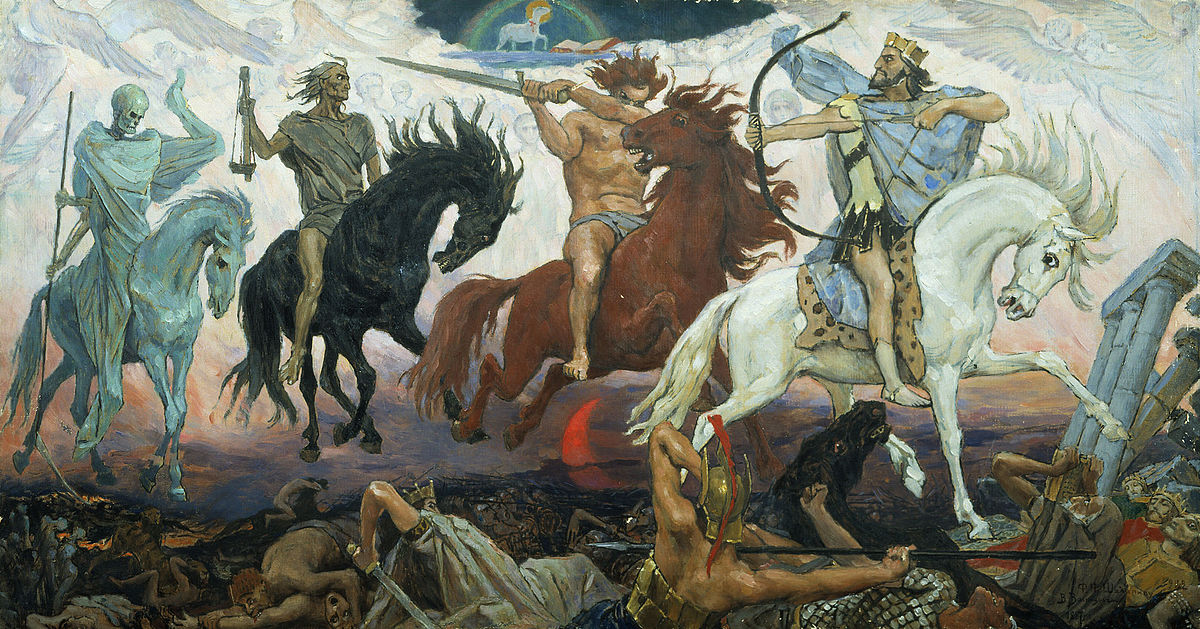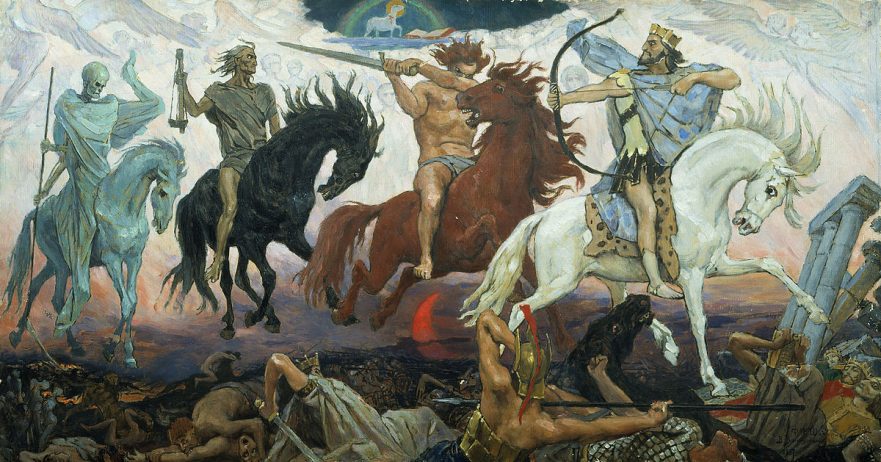In Revelation 6:1-8, upon the Lamb’s opening of the first seal, four horsemen appear: the first rode a white horse, and “had a bow; a crown was given to him, and he came out conquering and to conquer”; the second rode a red horse, and was given power “to take peace from the earth, so that people would slaughter one another; and he was given a great sword”; the third rode a black horse, and “held a pair of scales in his hand,” signifying a great famine; and the fourth rode a pale horse: “Its rider’s name was Death, and Hades followed with him.” These four horsemen, we are told, “were given authority over a fourth of the earth, to kill with sword, famine, and pestilence, and by the wild animals of the earth.”
Modern readers of the Book of Revelation usually assume that the key to understanding the book lies in discovering a one-to-one correspondence between the figures it presents, and real-life figures. Most readers, however, recognize that the second, third, and fourth horsemen are not real figures, but personifications of calamities. But what about the first horseman (the conqueror on the white horse)? Why do most readers think that the first horseman answers to a different interpretive device—that a real historical figure is portrayed there? The assumption, I believe, is wrong. The correct interpretation of the four horsemen appears only when we consider the four together as a unified symbol of widespread calamity.
Premium Members and Friends of JP must be signed in to view this content.
If you are not a Premium Member or Friend, please consider registering. Prices start at $5/month if paid annually, with other options for monthly and quarterly and more: Sign Up For Premium

Four Horsemen of Apocalypse painted by Viktor Vasnetsov (1887). Image courtesy of Wikimedia Commons.
- [1] The Septuagint's reading of Ezek. 5:12 is: "A fourth of you will be consumed by death, and a fourth of you will perish from the famine in your midst, and a fourth of you will be scattered into all the winds, and a fourth of you will fall by the dagger all around you, and a sword will pierce them." ↩
- [2] See W. Michaelis, "λευκός, λευκαίνω," in Theological Dictionary of the New Testament 4.242. ↩
- [3] "Will be": the future tense is from the perspective of the (implied) writer, and not our own. The issue of preterism (which I accept) lies beyond the scope of this paper. ↩
- [4] I would like to thank David Bivin for the invitation to contribute as a guest writer. This paper is based upon an article that I published in New Testament Studies in 1999. ↩




Comments 1
Very useful and insightful article! Thank you very much!